Quarterly report (April- June 2020) on anonymous sources in newspapers
South Asia Check / July 9, 2020
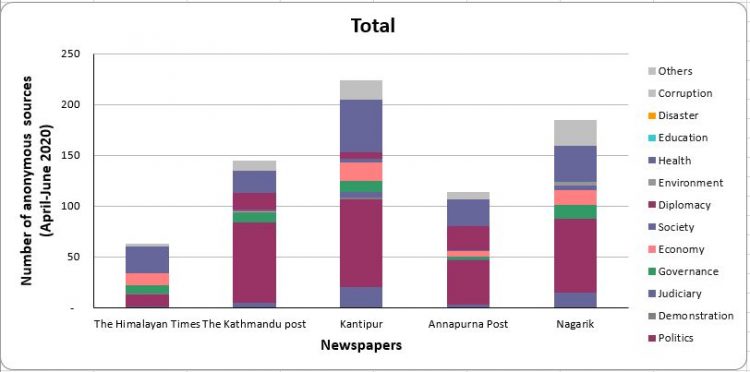
South Asia Check has, for the past several years, been tracking the use of anonymous sources in the news reports published on the front pages of six leading national dailies of Nepal – Kantipur, Nagarik, Annapurna Post, The Kathmandu Post, Republica and The Himalayan Times. But this quarter, we have not included English daily Republica because the newspaper suspended its publication including the e-paper since April 16 citing the COVID-19 pandemic.
The Himalayan Times, another English daily, has also suspended its print edition but it has been publishing the e-paper.
During the three months between April 1 and June 30, among the five national dailies, Nepali-language daily Kantipur used the most number of anonymous sources in its front page reports. It used a total of 224 anonymous sources in the front page reports during the period.
After Kantipur, the dailies using the most number of anonymous sources were Nagarik, The Kathmandu Post, Annapurna Post and The Himalayan Times respectively. The Himalayan Times used the least number of anonymous sources – 63 – this quarter.
During the three months, the front page reports of the five dailies used altogether 731 anonymous sources.
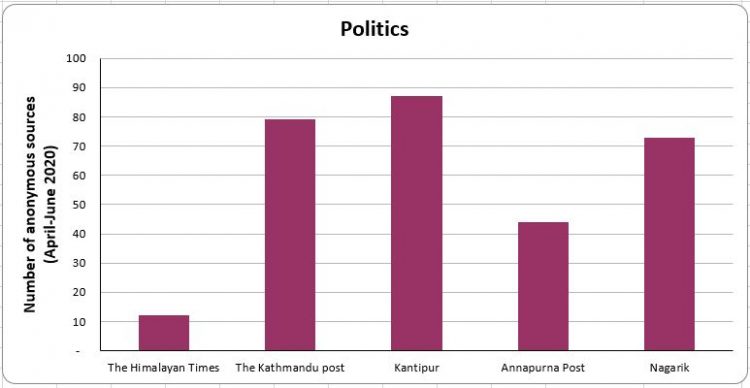
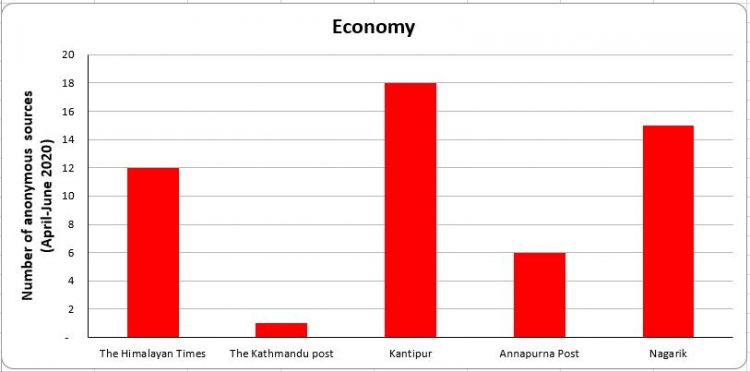
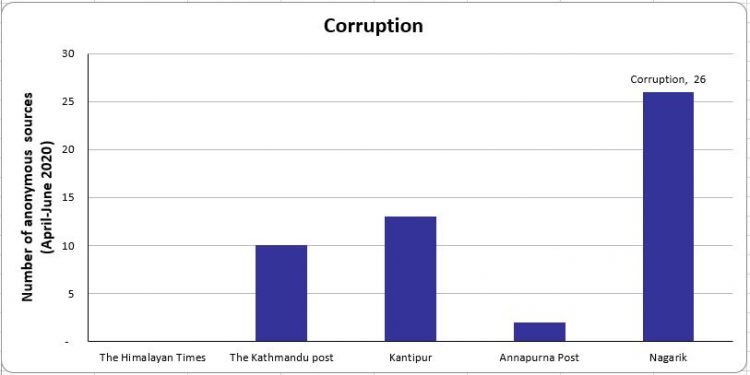
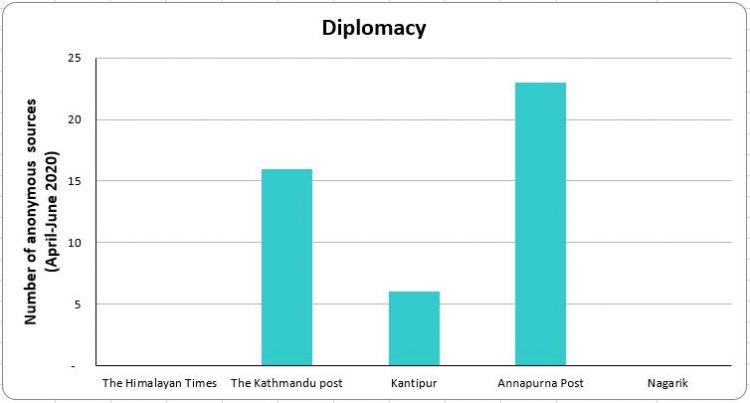
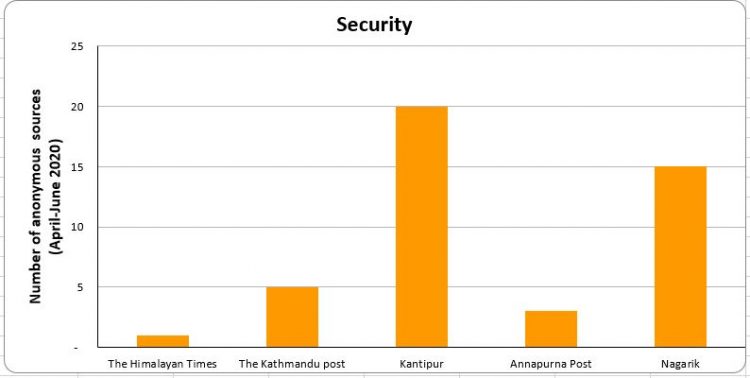

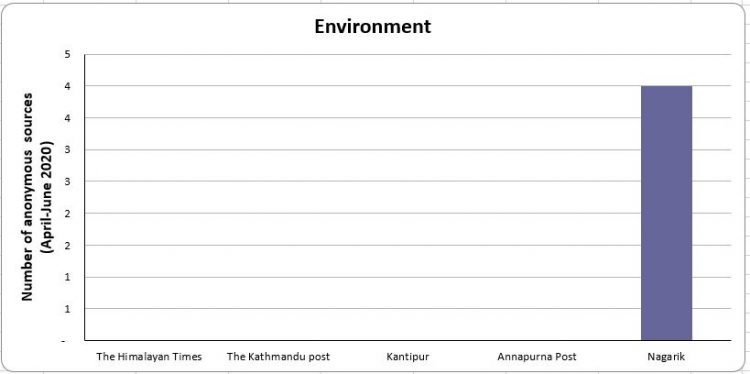
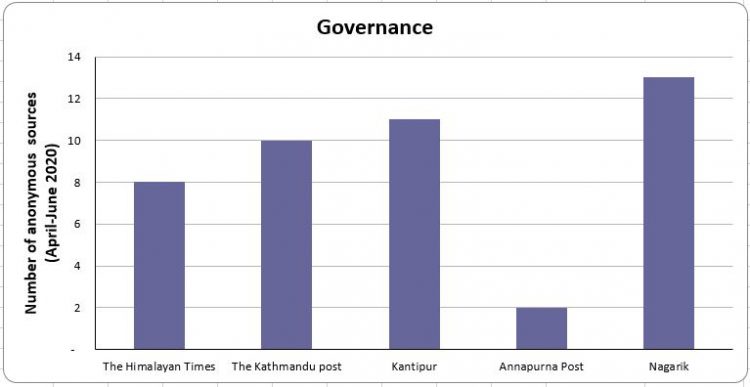
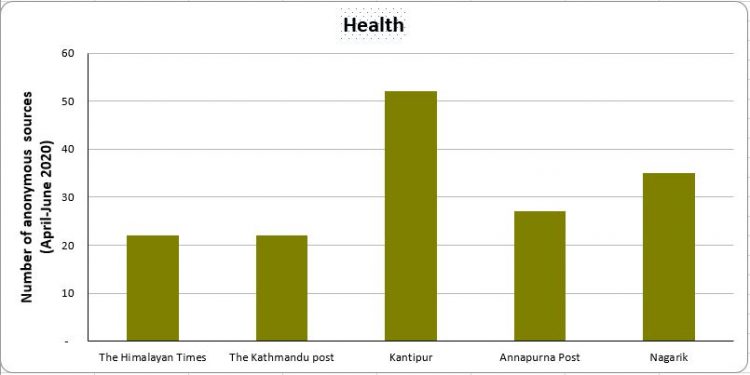
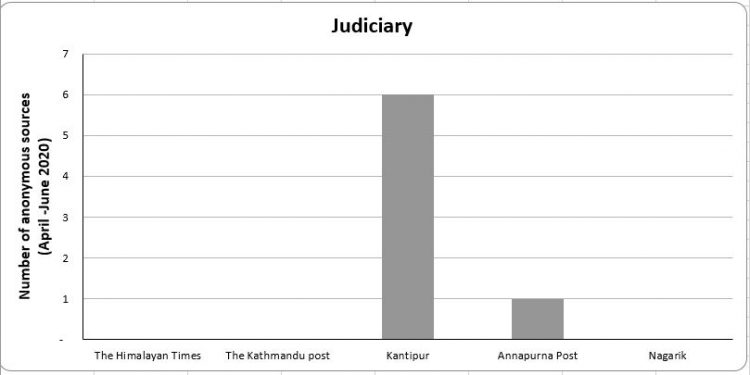
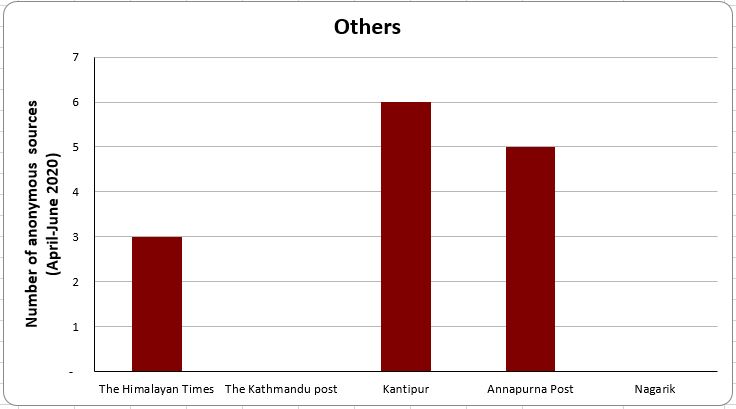
Anonymous sources were mostly used in politics-related news reports (in 295 instances) during the period. Kantipur and The Kathmandu Post were the first and second national dailies respectively using the highest numbers of anonymous sources in their politics-related reports; Kantipur used anonymous sources in 87 instances and The Kathmandu Post in 79 instances in such reports.
After politics, health is the second topic in the newspapers where anonymous sources were used in highest numbers. During this period, anonymous sources were used in 158 instances in health-related news reports in the five newspapers.
Regarding the use of anonymous sources in news reports, ‘Journalist’s Code of Conduct, 2016 (first amendment 2019)’ issued by the Nepal Press Council states the following:
“Source should be quoted for the reliability of the news. However, while quoting the source, the name and identity of such source should be kept confidential so as to avoid any serious damage to the source.”
The identity of news source should be protected only if revealing the source’s identity can cause serious harm to him/her.
But some news reports published during this period have quoted anonymous sources even when there was no apparent need to do so. For example, a report headlined ‘Three Indian nationals in Birgunj test positive for COVID-19’ published in an English-language daily stated, “A police official said that they are attempting to track the men’s travel history.”
Another report titled ‘With mass testing, more cases of COVID-19 begin to emerge’ in an English-language daily states: “‘Sending suspects having symptoms to isolation facilities and keeping people who returned from abroad in quarantine is a regular process,’ said an official at the Health Ministry.”
“We perform several tests even after both rapid [rapid diagnostic test or RDT] and polymerase chain reaction [PCR] show the same result. Only then we confirm whether it is positive or negative.”
Similarly, a report in an English-language daily headlined ‘Three test positive for antibodies’ states: “‘They tested positive in rapid diagnostic tests. Their samples will undergo polymerase chain reaction test to confirm whether they have contracted COVID-19,’ said a doctor at Dhulikhel hospital adding the youths have been in isolation since this afternoon.”
Another report in an English-language daily headlined ‘Apartment building sealed after positive rapid tests’ states: “An occupant of the Sun City Apartments told THT that police personnel came to the building in two vehicles today after the three residents tested positive for COVID-19.”
Another report headlined ‘2900 people in military quarantine facility’ published in a Nepali-language daily states: “She tested negative for COVID-19 and her condition is normal, according to a military source.”
Likewise, a report headlined ‘Myanmar and UAE repatriating Nepalis free of cost’ published in a Nepali-language daily states: “However, those stranded in Myanmar are being repatriated at the initiation of the [Nepali] army, a foreign ministry official said.”
The use of anonymous sources in the aforementioned cases appear unjustified because disclosing the sources’ identities does not seem to cause serious harm to the sources.
Haphazard use of the anonymous sources diminishes the credibility of news reports and the newspapers publishing such reports.
Click here to download the spreadsheet of anonymous sources statistics prepared by South Asia Check.
This material is copyrighted but may be used for any purpose by giving due credit to southasiacheck.org.
Comments
Latest Stories
- In Public Interest Covid-19 cases are low, but that’s not an excuse to avoid vaccination
- In Public Interest What is BF.7, the sub-variant that has the world by its grip?
- In Public Interest Threat of a new Covid-19 wave looms large amid vaccine shortage in Nepal
- In Public Interest As cases decline, Covid-19 test centres in Kathmandu are desolate lot
- In Public Interest Dengue test fee disparity has patients wondering if they’re being cheated
- In Public Interest As dengue rages on, confusion galore about what it is and what its symptoms are. Here’s what you need to know
In Public Interest
 Covid-19 cases are low, but that’s not an excuse to avoid vaccination
The Pfizer-BioNTech bivalent vaccines authorised by the Nepal Government provide better protection a...
Read More
Covid-19 cases are low, but that’s not an excuse to avoid vaccination
The Pfizer-BioNTech bivalent vaccines authorised by the Nepal Government provide better protection a...
Read More
- What is BF.7, the sub-variant that has the world by its grip?
- Threat of a new Covid-19 wave looms large amid vaccine shortage in Nepal
- As cases decline, Covid-19 test centres in Kathmandu are desolate lot
- Dengue test fee disparity has patients wondering if they’re being cheated
- As dengue rages on, confusion galore about what it is and what its symptoms are. Here’s what you need to know